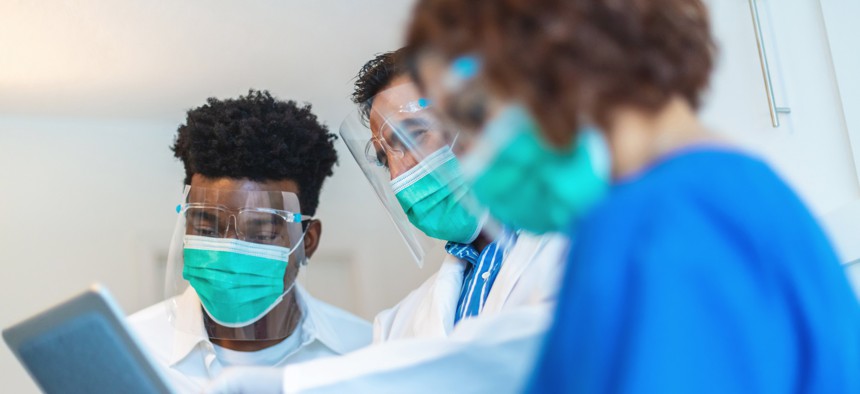Getting ahead of the next pandemic

eyecrave productions / Getty Images
New York City’s Pandemic Response Institute will collect data and leverage computer models to develop locally tailored health solutions to prepare for, respond to and recover from future health crises.
Data and technology will factor heavily into New York City’s new Pandemic Response Institute (PRI), an organization that will apply lessons learned from the COVID-19 pandemic to other public health emergencies.
Mayor Eric Adams announced the launch of PRI on May 10. Through a new partnership with Columbia University and the City University of New York Graduate School of Public Health and Health Policy (CUNY SPH) and in coordination with the New York City Department of Health and Mental Hygiene (DOHMH) and New York City Emergency Management, the institute will work in communities across the city’s five boroughs to develop locally tailored health solutions, information and resources to prepare for, respond to and recover from future health crises, according to a May 10 press statement.
To achieve this, PRI will have four technical cores: innovation and scaling; data collection, sharing and translation; epidemiology and modeling; and workforce capacity and preparedness.
“One of the initial things we’re doing is we’re looking at what are the systems that really need to be in place to enable all of these different possibilities,” said Dr. Bruce Y. Lee, chief technology officer at PRI.
Tasks that the data team will be responsible for include analyzing public health emergency data streams, developing a framework for sustained and streamlined collaboration, and identifying and developing new data streams.
But PRI will be about more than collecting data, Lee added. “There’s a difference between collecting data on communities and neighborhoods vs. engaging them very closely and carefully,” he said. “One of the challenges [during the pandemic] is people felt separated from the decision-making, and so you really want people throughout the city to be more connected to one another so everyone actually understands what’s going on.”
To do this, the team will look at how people use technology to communicate to help streamline messaging across all communities. A cacophony of information led to wide variations in face mask use and vaccine acceptance, for instance.
“One of the challenging things that occurred throughout the pandemic was there were so many messages floating around all over the place – messages at the local level, regional level and the national level. You get messages across social media and from different types of politicians and personalities, and it made it difficult for people to really sort out what’s real and what’s not real,” said Lee, who is also a professor of health policy and management at CUNY SPH.
Another near-term endeavor is using computer modeling to address ongoing pandemic issues. “We have to remember that the pandemic is not over, and there are still questions and decisions to be made,” he said.
In the long term, though, the team has three main goals. One is to enhance DOHMH’s capacity in modeling and use of epidemiological and other data to study future health risk. The others are leading the production of forecast and projections of health, social and economic impacts of public health emergencies and developing simulations of pharmaceutical and non-pharmaceutical interventions, according to the PRI website.
That predictive capability is crucial because it enables a proactive response to prevent surges in health threats – something that just didn’t happen during this pandemic, Lee said. Although businesses and schools closed in spring 2020 when contagion was out of hand, “our society never really did catch up. It was more responding to surges,” he said. “A surge would occur, and you would respond by putting on more precautions, whereas precautions work best before the surges.”
Computer modeling can anticipate what might happen, enabling officials to put things in place before the surges.
“The COVID-19 pandemic in many cases didn’t create new problems. It uncovered existing problems,” Lee said. “Solving them or addressing them can help the city from a day-to-day perspective. For instance, better understanding of what’s happening in the community and better data-sharing can help for a whole host of things, not just emergencies.”
In addition to collaborating with city government entities, PRI also has partnerships with nonprofit, research, faith-based and corporate organizations that played a role in the city’s pandemic response. The city issued a request for proposals for the institute last year and awarded $20 million in funding for eligible costs to Columbia and CUNY SPH.
Stephanie Kanowitz is a freelance writer based in northern Virginia.
NEXT STORY: Database for a secure EV battery supply chain





